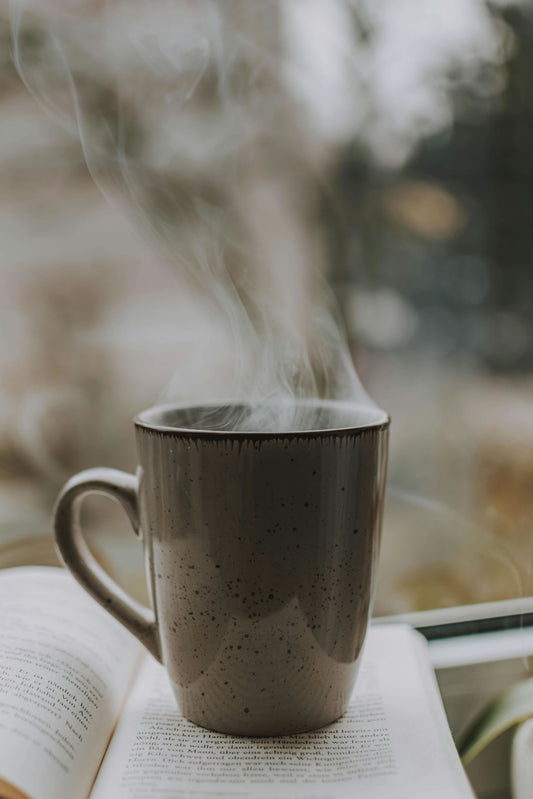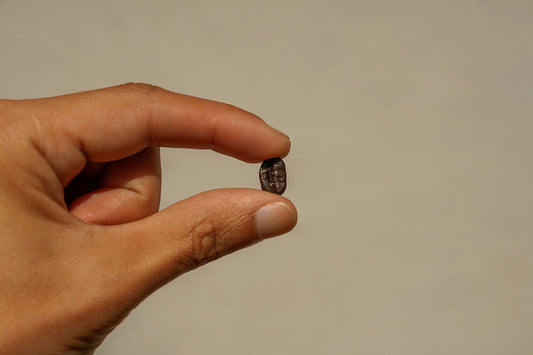Few beverages have captured the hearts and palates of people worldwide like the latte in today's globalised world, where cultures blend and global trends travel without a hitch. The latte, with its foamy texture and Italian origins, has become a staple in coffeehouses around the world.
In this article, we examine the significance of the latte in various cultures around the world and the reasons for its widespread appeal.
Originating in the Italian phrase "caffè latte," the word "latte" means "milk coffee." However, its significance extends far beyond the beverage itself. The latte is a perfect example of a synergy of contrasting flavors and textures; the boldness of coffee and the creaminess of milk work together to create a delicious and decadent drink.
Its adaptability has made it a fertile ground for chefs to try out new techniques and incorporate local flavors, contributing to its global fame. It doesn't matter if you're drinking a classic caffè latte in a crowded Milanese café or a flavored latte creation in a hip café in Tokyo or New York City; the latte's popularity is unwavering.
Embark on this adventure with us as we learn the "latte meaning" and the common cultural ground that unites coffee drinkers everywhere.

What Does The Word "Latte" Mean?
Its connotation goes far beyond the literal translation, however, representing the smooth union of coffee and milk.
For coffee drinkers all over the world, this blend represents the perfect harmony between the bold essence of coffee and the creamy embrace of milk.
Historical Origin
It was in Italy in the 17th century that the latte first appeared. Traditionally, it was a simple Italian drink made with strong espresso and steamed milk. As its fame grew, it became part of the standard fare at cafes everywhere. A simple Italian invention that has become a worldwide phenomenon, it is now a staple of coffee culture around the world.
Cultural Depth
The latte has taken on different connotations in different cultures over time. The latte is still an essential part of daily life in Italy, where it is typically consumed first thing in the morning and in smaller quantities.
On the other hand, lattes have evolved in other parts of the world, especially in North America and Asia. The beverage has evolved into a platform for artistic expression, from flavoured variations to intricate latte art. The latte's malleability is on display in the ease with which it crosses cultural boundaries.
Latte is a word that can mean many different things to many different people. Its significance goes beyond linguistic barriers, providing a sensory experience that is meaningful to coffee lovers all over the world. A testament to the enduring power of a well-crafted beverage, the latte's journey from its origins in Italian homes to its current status as a global phenomenon is fascinating.
Latte Meaning: The Linguistic Origin Latte
The word "latte" comes from Italian and has its origins in Italian coffee culture. The word "latte" was borrowed from the Italian language, where it literally means "milk." Caffè latte literally means "milk coffee" when combined with the word "caffè," which means coffee.
This word perfectly captures what makes this drink so special: the complementary flavors of coffee and milk.
Caffè latte is a popular Italian coffee drink that is made by adding hot steamed milk to a shot of espresso for a smooth and creamy taste.
The term "caffè macchiato" was first used in Italy, where this method of brewing coffee was widely adopted. As the popularity of coffee increased around the world, latte recipes morphed and changed to accommodate local preferences.
Despite its apparent simplicity, the word "latte" comes from the Italian for "milk," which highlights the crucial role milk plays in giving this popular coffee drink its signature flavour and texture. This linguistic backstory highlights the illustrious history of coffee from which the latte was born, and how it spread to become a beloved staple of coffee shops all over the world.
The Fundamental Ingredient of a Latte
Without a doubt, milk is crucial to the making of a latte, as it influences both the taste and the consistency. The ability to steam milk just right is a fundamental skill in the world of coffee alchemy. A latte's velvety smoothness and creamy texture come from the steamed milk that is added to the coffee.
Milk is steamed by heating it to a specific temperature, typically around 150°F (65°C), and then adding air to it to create microfoam. Getting the right texture requires a lot of work. Making the milk foamy and smooth requires introducing microbubbles, which are tiny bubbles of air suspended in the liquid.
This microfoam not only improves the latte's mouthfeel, but it also makes it look more appealing, especially when it forms elaborate latte art patterns on top.
Getting the milk to the right consistency when steamed is crucial. When done right, it complements the robust flavour of the espresso while taming the bitterness. The rich coffee and smooth milk provide a comforting and decadent sensory experience, and the contrast between the two is delightful.
In essence, milk is more than just a supporting player in a latte; it's the co-star who takes centre stage. In order to make lattes that are not only delicious but also visually appealing, baristas place a premium on mastering the art of steaming milk to perfection. The classic latte's popularity persists because of careful preparation and the search for the perfect texture.
Different Latte Variants
1. Chai Latte
A hot and aromatic drink made by combining black tea with spices and steamed milk, then sweetening it with honey or sugar.
2. Matcha Latte
Matcha lattes have a vibrant green colour and a slightly bitter, earthy taste because they are made from finely ground green tea leaves that are then diluted with milk and sometimes sweetened.
3. Turmeric Latte (Golden Latte)
This golden-hued latte is made with turmeric, milk, and sometimes other spices like black pepper, cinnamon, and ginger.
4. Beetroot Latte
A vibrant latte with a mildly sweet and earthy flavour, achieved by combining beetroot powder with milk.
5. Lavender Latte
This latte has a floral aroma and a distinctive, calming flavour thanks to the addition of dried lavender buds or lavender syrup.
6. Rose Latte
This latte gets its pretty pink colour and light floral flavour from rose syrup or rose water.
7. Vanilla Latte
Vanilla lattes, made with espresso, steamed milk, and vanilla syrup, are a popular classic because of their soothing sweetness and comforting aroma.
8. Honey Lavender Latte
This latte is both delicious and fragrant, thanks to the combination of honey and lavender.
9. Coconut Milk Latte
Coconut milk lattes, a dairy-free alternative, are prepared by steaming coconut milk and adding sugar to taste.
10. Caramel Latte
This latte's caramel syrup or caramel sauce base gives it a luscious, sugary, and nutty taste.
11. Maple Pecan Latte
This fall-inspired latte features maple syrup and pecan flavouring, making it a seasonal favourite.
12. Mocha Latte
Mocha lattes, made with espresso, steamed milk, and chocolate, are a delicious fusion of coffee and cocoa.
13. Almond Milk Latte
This take on the latte uses almond milk instead of coconut milk for a flavour that's nutty and just a touch sweet.
14. Oat Milk Latte
The growing popularity of oat milk lattes can be attributed to their smooth texture and mild oat flavour.
15. Hazelnut Latte
Hazelnut lattes, which are made with hazelnut syrup, are nutty and sweet, and go great with espresso and steamed milk.
These latte varieties are a tasty representation of the wide variety of ways in which people enjoy their coffee and tea around the world.
Cultural Interpretations of Latte
Originally created in Italy, lattes have undergone fascinating transformations as they have made their way around the world and adapted to local tastes. The espresso and steamed milk drink has been adapted by many cultures, resulting in a wide range of lattes that are as unique as the ingredients and techniques used to make them.
The Chai Latte, a fragrant combination of black tea, spices, and milk, is the most popular beverage in India. The chaiwalas who sell their signature brews on street corners are an integral part of India's tea culture, and their spicy, aromatic beverage is a reflection of that.
The Matcha Latte, featuring finely ground green tea leaves whisked into a creamy blend of milk, is the national drink of Japan. Its deep green colour and earthy, slightly bitter flavour are representative of the respect the Japanese have for the tea ceremony.
The Flat White, a relative of the latte, is highly regarded down under in Australia. It is characterised by a layer of velvety microfoam milk atop a shot of espresso, and it is a great example of Australian coffee culture and expertise.
Cardamom and saffron give the popular coffee drink a Middle Eastern twist in the Middle East. The spices bring to mind the welcoming culture and delicious cuisine of the area.
The latte's western European cousin, the Vienna Melange, is a staple in Austria. This indulgent take on the traditional latte combines espresso with steamed milk and a generous helping of whipped cream.
Café con Leche, a strong coffee brewed with generous amounts of milk and sugar, is the most popular beverage in South America. This is a result of the continent's long history with coffee and the Spanish colonial influence.
These regional takes on the latte not only showcase the diversity of coffee traditions around the world but also highlight the importance of using regional ingredients and methods. Lattes from all over the world take us there with every sip, revealing the myriad cultures that have contributed to the development of these cherished beverages.
From Art to Mug: The Aesthetics of Latte Art
Latte art is a stunning example of how skill and creativity can come together in the coffee industry. Latte art is made by carefully pouring steamed milk into a shot of espresso and then using deft hand movements to create beautiful designs on the surface of the coffee.
The barista's milk and coffee creations are displayed like works of art on a canvas. Latte art is appealing not only because of its aesthetic value, but also because of the ways in which it improves the latte-drinking experience.
For starters, latte art makes the coffee look much fancier. An ordinary cup of coffee becomes a work of art when decorated with a beautiful rosette, heart, or intricate fern design. It improves the drinking experience by making it more elegant and therefore more photogenic.
Second, latte art exemplifies the barista's skill and passion, which is fitting given the handmade character of the beverage. Making beautiful, repeatable latte art takes practise, skill, and knowledge of milk and espresso. It's proof that the barista really cares about making a great cup of coffee every time.
Last but not least, latte art provides a multifaceted experience by stimulating multiple senses. The artistic flourishes on the surface of the coffee slowly dissolve into the drink as you take your first sip, taking your taste buds on a journey. Each sip is a harmonious delight, thanks to the smoothness of the milk and the richness of the espresso's aroma.
Latte art is more than just a pretty picture on a cup of coffee; it's an expression of the barista's skill and passion, a way to stimulate the senses, and a reminder that there's beauty even in the smallest of pleasures. A beautiful visual representation of the idea that coffee is an artistic and devotional medium as well as a beverage.
Advantages and Disadvantages of Consuming Lattes Regularly
Advantages
- Calcium Intake: The milk used to make lattes provides a good dose of the mineral calcium. Lattes are a great option for those who are trying to increase their calcium intake, which is important for healthy bones and teeth.
- Antioxidant Benefits: You can reap the health benefits of coffee's antioxidants by drinking coffee-based lattes. The health benefits of these compounds include a lower risk of developing certain chronic diseases.
- Energy Boost: Caffeine, found in coffee, is a common ingredient in lattes and is responsible for a mild stimulation of the central nervous system and increased alertness. Those who need a midday pick-me-up may benefit the most from this.
- Mood Enhancement: Caffeine and the soothing sensation of a latte can have a calming effect on some people, relieving stress and tiredness.
Disadvantages
- Caloric Content: When prepared with whole milk or sugar syrups, lattes can have a high calorie count. High-calorie lattes can contribute to weight gain if they are consumed on a regular basis without also adhering to a healthy diet and regular exercise.
- Sugar and Sweeteners: Many lattes have unhealthy amounts of sugar or artificial sweeteners added to them. Overeating too much sugar can lead to weight gain and even diabetes type 2.
- Caffeine Sensitivity: While some people may benefit from caffeine in small doses, others may experience jitteriness, anxiety, and sleep disruptions if they consume too much. Caffeine issues may be exacerbated by a regular intake of lattes.
- Dairy Allergies or Lactose Intolerance: Traditional lattes made with cow's milk can cause gastrointestinal distress in people who are lactose intolerant or have a dairy allergy. You can lessen this worry by switching to a non dairy milk alternative, such as almond, soy, or oat milk.
- Acidic or Irritating: For those who are prone to stomach upset or acid reflux, coffee may be too acidic. High-coffee-to-milk-ratio lattes may contribute to these problems.
Regular consumers of lattes may experience both positive and negative effects. Selecting lower-calorie and sugar-free options, reducing caffeine consumption, and using milk alternatives as needed can help you reap the benefits while avoiding the risks. As with any food option, moderation and balance are necessary for safe latte consumption.
Popularity of Lattes in Coffee Shops Worldwide
Lattes have quickly become a worldwide phenomenon, with fans of speciality coffee drinking them regardless of their location or cultural background. A well-prepared latte has won over coffee drinkers everywhere, whether they reside in a bustling metropolis or a sleepy village.
The fact that lattes can be customised to suit regional tastes is what makes them so interesting, though. From the streets of Rome to the cafés of Tokyo, latte art takes on a new flavour and aesthetic in every region.
The journey of this beloved coffee drink around the world, from the intricate patterns of foam in Europe to the aromatic spices that infuse lattes in the Middle East, demonstrates not only its widespread popularity but also its remarkable versatility in catering to diverse palates.
Juju Blends’ Matcha Latte with Moringa Extract
A truly original and invigorating twist on the traditional latte, Juju Blends' Matcha Latte with Moringa Extract is a must-try. The unique health benefits of this mixture come from the synergistic combination of two superfoods: matcha and moringa.
Green tea powder, or matcha, has a robust earthy flavour and a high concentration of antioxidants. The extract of moringa leaves lends a rich, earthy flavour that harmonises with the drink's delicate bitterness to stimulate the taste buds.
Because of moringa's high vitamin and mineral content, this drink is also a healthy choice because it provides a natural source of energy. Customers are invited to indulge in a beverage that not only delights the taste buds but also nurtures the body thanks to Juju Blends' latte, which features a unique blend of matcha and moringa that promises a revitalising and nourishing experience.
Latte vs Espresso-Based Drinks
Latte, a popular espresso-based coffee drink, is notable for its silky texture and rich flavour. Its ingredients and proportions set it apart from other espresso-based beverages, such as cappuccino, flat white, and macchiato.
A latte is made with a shot of espresso and a lot of steamed milk, and it's usually topped with a little bit of foamed milk. The resulting coffee has a less robust flavour and a creamier texture, making it a better option for some people.
A cappuccino, on the other hand, has a more intense coffee flavour and a dryer foam because it is made with equal parts espresso, steamed milk, and milk foam.
A flat white, also popular in Australia and New Zealand, is made with equal parts espresso and milk but is distinguished by its velvety microfoam, which strikes a nice balance between boldness and creaminess.
A macchiato, which is essentially an espresso that has been "stained" or "marked" with a small amount of milk or foam, combines the intense coffee flavour of an espresso with the smoothness of milk or foam. These espresso-based beverages each have their own unique flavour and texture, making them suitable for people with a wide variety of coffee preferences.
Latte Trends to Watch Out For
In the coming years, we can anticipate some fascinating new developments in the world of lattes. New flavor profiles and experimental preparation methods are gaining popularity. Juju's Moringa Matcha Latte is a great example, as it combines two superfoods—moringa and matcha—to create a drink that is both delicious and nutritious. This trend shows that people want their lattes to do more than just taste good; they also want to be good for them.
Precision and attractiveness in presentation are driving changes in modern methods of preparation. Once the sole domain of professional baristas, latte art has recently become popular in cafes and homes across the globe. The ideal microfoam consistency can be achieved with the help of cutting-edge milk frothing and texturing methods, resulting in lattes that are creamier and more indulgent.
In addition, the latte business is propelled by a commitment to sustainability. More and more cafes are adopting environmentally friendly policies, such as serving plant-based milk alternatives and eliminating single-use plastics. Increasing attention is being paid to the ethical sourcing of coffee beans and other ingredients, connecting lattes with eco-conscious consumers.
Innovative ingredients, precise preparation techniques, and a dedication to sustainability are shaping the latte trends to look out for, making the lattes of the future flavorful and environmentally conscious. One exciting example of how the latte landscape is changing to accommodate consumers' increasingly nuanced preferences is Juju's Moringa Matcha Latte.
Frequently Asked Questions
What is the meaning of the word "latte"?
The word "latte" is of Italian origin and translates to "milk" in English. In the context of coffee, a latte is a popular espresso-based beverage that consists of a shot of espresso mixed with a generous amount of steamed milk, often topped with a small layer of frothy milk foam.
Is there a difference between a latte and a café latte?
No, there is no substantial difference between a "latte" and a "café latte." "Latte" is an abbreviation of "caffè latte," which is Italian for "milk coffee." Both terms refer to the same espresso-based drink with steamed milk.
How does a latte differ from other coffee beverages like cappuccino or macchiato?
The primary difference between a latte and other espresso-based drinks like cappuccino and macchiato lies in their ingredients and proportions. A latte contains more steamed milk and less frothy milk foam compared to a cappuccino. A macchiato, on the other hand, consists of espresso "marked" or "stained" with a small amount of milk or foam, resulting in a bolder coffee flavor with a touch of creaminess.
Are there variations of lattes with different flavors?
Yes, there are numerous flavored lattes available. Common variations include vanilla latte (with vanilla syrup), caramel latte (with caramel syrup), and mocha latte (with chocolate). These flavorings can be added to the espresso and milk to create a wide range of taste experiences.
Are there dairy-free or vegan alternatives for lattes?
Absolutely. Many coffee shops offer dairy-free milk alternatives such as almond, soy, oat, or coconut milk for those who are lactose intolerant or prefer vegan options. These milk alternatives can be used to make delicious dairy-free lattes.
Conclusion
The coffee-related connotations of the word "latte" are what this article is referring to. The word latte can be roughly translated to "milk" in English from its Italian origins.
When applied to coffee, it refers to a well-liked espresso-based drink that typically includes a shot of espresso combined with a sizable amount of steamed milk and, on occasion, a layer of frothy milk foam for decoration.
The terms "latte" and "café latte" are often used interchangeably to refer to the same coffee beverage. Although lattes have gained widespread popularity in recent years, it is still important for coffee connoisseurs and novices alike to understand what exactly a latte is.




